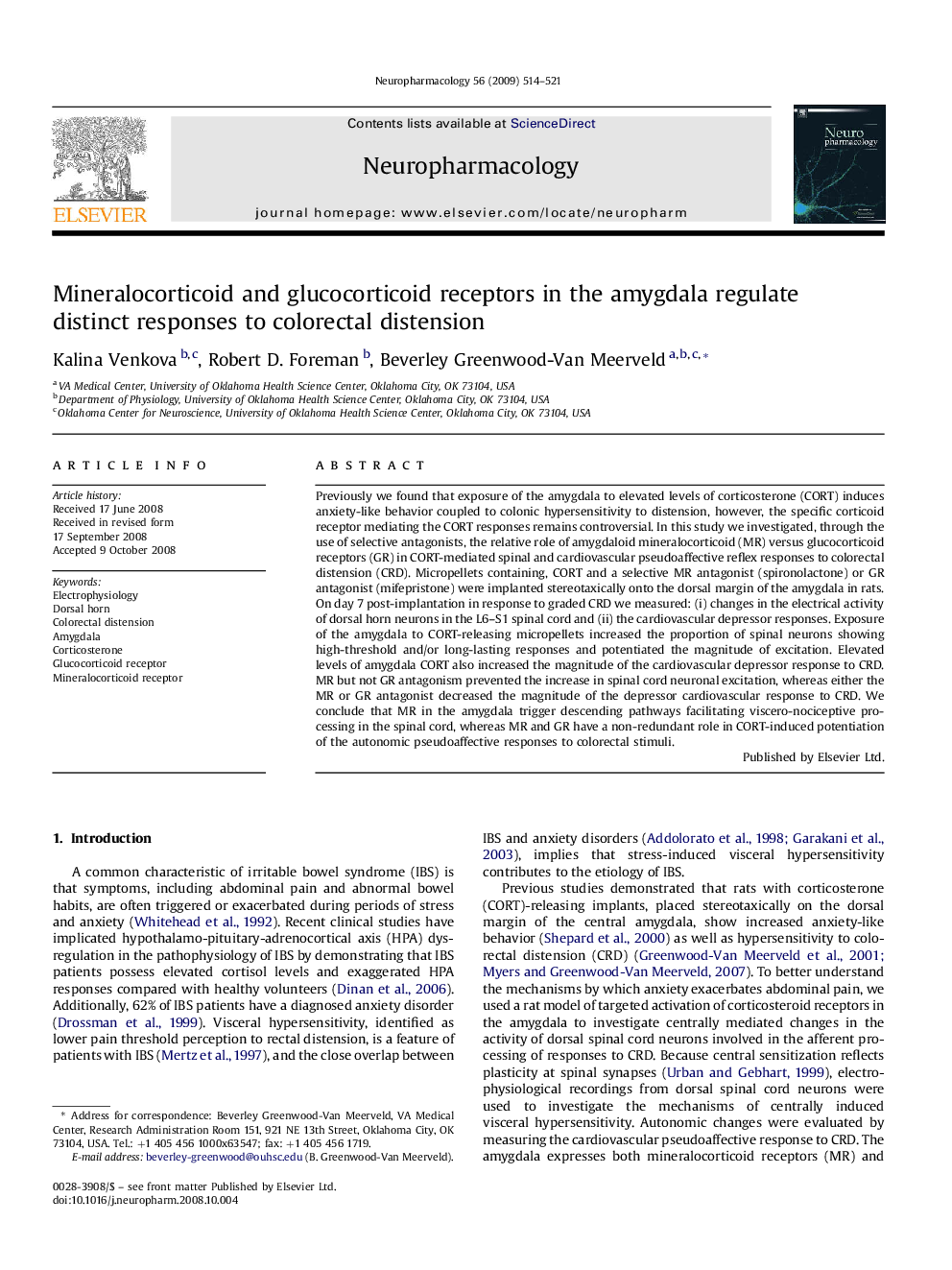| Article ID | Journal | Published Year | Pages | File Type |
|---|---|---|---|---|
| 2494267 | Neuropharmacology | 2009 | 8 Pages |
Previously we found that exposure of the amygdala to elevated levels of corticosterone (CORT) induces anxiety-like behavior coupled to colonic hypersensitivity to distension, however, the specific corticoid receptor mediating the CORT responses remains controversial. In this study we investigated, through the use of selective antagonists, the relative role of amygdaloid mineralocorticoid (MR) versus glucocorticoid receptors (GR) in CORT-mediated spinal and cardiovascular pseudoaffective reflex responses to colorectal distension (CRD). Micropellets containing, CORT and a selective MR antagonist (spironolactone) or GR antagonist (mifepristone) were implanted stereotaxically onto the dorsal margin of the amygdala in rats. On day 7 post-implantation in response to graded CRD we measured: (i) changes in the electrical activity of dorsal horn neurons in the L6–S1 spinal cord and (ii) the cardiovascular depressor responses. Exposure of the amygdala to CORT-releasing micropellets increased the proportion of spinal neurons showing high-threshold and/or long-lasting responses and potentiated the magnitude of excitation. Elevated levels of amygdala CORT also increased the magnitude of the cardiovascular depressor response to CRD. MR but not GR antagonism prevented the increase in spinal cord neuronal excitation, whereas either the MR or GR antagonist decreased the magnitude of the depressor cardiovascular response to CRD. We conclude that MR in the amygdala trigger descending pathways facilitating viscero-nociceptive processing in the spinal cord, whereas MR and GR have a non-redundant role in CORT-induced potentiation of the autonomic pseudoaffective responses to colorectal stimuli.
